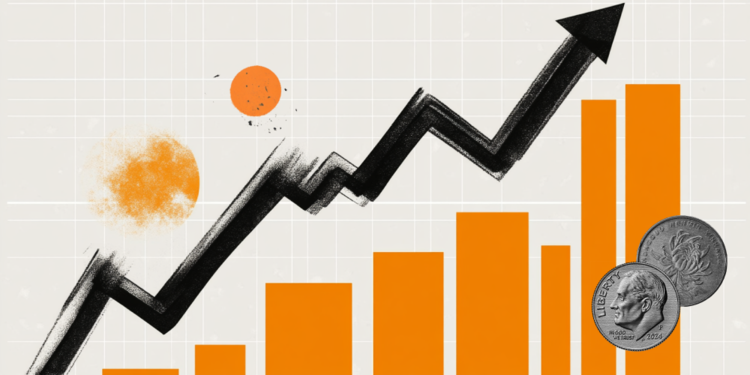- USD/CAD stages a goodish rebound from a one-week low touched earlier this Tuesday.
- Sliding Crude Oil prices undermine the Loonie and lend support amid a stronger USD.
- Dovish Fed expectations and the risk-on mood might cap gains for the USD and the pair.
The USD/CAD pair attracts some dip-buying following an intraday dip to sub-1.3800 levels, or a one-week low and touches a fresh daily top during the early part of the European session on Tuesday. Spot prices currently trade around the 1.3835-1.3840 region and for now, seem to have stalled a sharp retracement slide from the highest level since October 2022 touched on Monday.
Against the backdrop of worries about an economic downturn in China, the incoming softer US macro data suggested that the world’s largest economy was slowing faster than initially expected. This is expected to dent fuel demand and drags Crude Oil prices lower for the fourth straight day, which, in turn, is seen undermining demand for the commodity-linked Loonie. Apart from this, a goodish pickup in the US Dollar (USD) demand, supported by rebounding US Treasury bond yields, turn out to be a key factors acting as a tailwind for the USD/CAD pair.
That said, a turnaround in the global risk sentiment, along with dovish Federal Reserve (Fed) expectations, might hold back the USD bulls from placing aggressive bets and cap gains for the currency pair. In fact, the markets are currently pricing in a near 100% chance that the US central bank will cut interest rates by 50 basis points in September. This should keep a lid on any further upside for the US bond yields and the Greenback, warranting caution for the USD/CAD bulls in the absence of any relevant market-moving economic releases from the US or Canada.
Furthermore, the risk of a broader Middle East conflict continues to fuel concerns about supply disruptions from the key Oil producing region and could help limit losses for Crude Oil prices. This further makes it prudent to wait for strong follow-through buying before positioning for the resumption of the USD/CAD pair’s recent upward trajectory witnessed over the past month or so.
Canadian Dollar FAQs
The key factors driving the Canadian Dollar (CAD) are the level of interest rates set by the Bank of Canada (BoC), the price of Oil, Canada’s largest export, the health of its economy, inflation and the Trade Balance, which is the difference between the value of Canada’s exports versus its imports. Other factors include market sentiment – whether investors are taking on more risky assets (risk-on) or seeking safe-havens (risk-off) – with risk-on being CAD-positive. As its largest trading partner, the health of the US economy is also a key factor influencing the Canadian Dollar.
The Bank of Canada (BoC) has a significant influence on the Canadian Dollar by setting the level of interest rates that banks can lend to one another. This influences the level of interest rates for everyone. The main goal of the BoC is to maintain inflation at 1-3% by adjusting interest rates up or down. Relatively higher interest rates tend to be positive for the CAD. The Bank of Canada can also use quantitative easing and tightening to influence credit conditions, with the former CAD-negative and the latter CAD-positive.
The price of Oil is a key factor impacting the value of the Canadian Dollar. Petroleum is Canada’s biggest export, so Oil price tends to have an immediate impact on the CAD value. Generally, if Oil price rises CAD also goes up, as aggregate demand for the currency increases. The opposite is the case if the price of Oil falls. Higher Oil prices also tend to result in a greater likelihood of a positive Trade Balance, which is also supportive of the CAD.
While inflation had always traditionally been thought of as a negative factor for a currency since it lowers the value of money, the opposite has actually been the case in modern times with the relaxation of cross-border capital controls. Higher inflation tends to lead central banks to put up interest rates which attracts more capital inflows from global investors seeking a lucrative place to keep their money. This increases demand for the local currency, which in Canada’s case is the Canadian Dollar.
Macroeconomic data releases gauge the health of the economy and can have an impact on the Canadian Dollar. Indicators such as GDP, Manufacturing and Services PMIs, employment, and consumer sentiment surveys can all influence the direction of the CAD. A strong economy is good for the Canadian Dollar. Not only does it attract more foreign investment but it may encourage the Bank of Canada to put up interest rates, leading to a stronger currency. If economic data is weak, however, the CAD is likely to fall.







